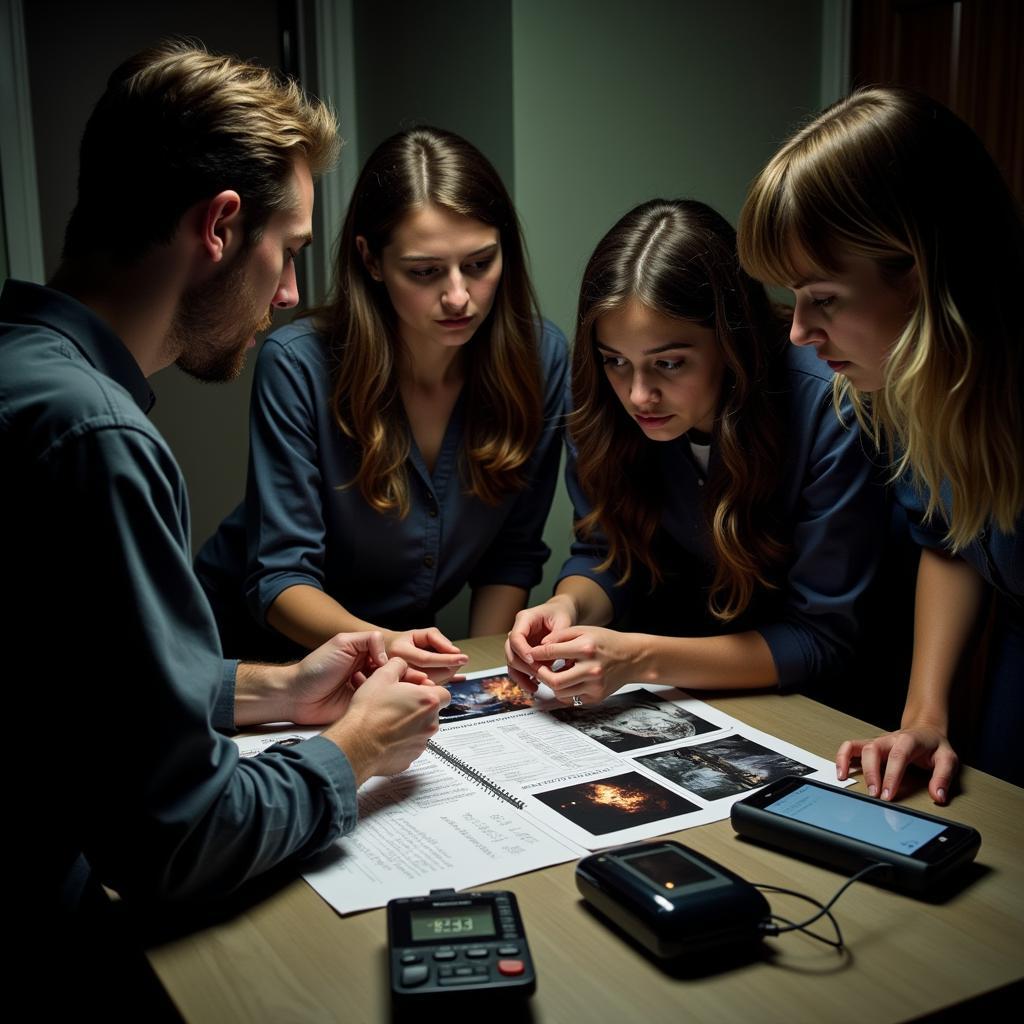The world of paranormal research, much like our own universe, thrives on order and meticulous documentation. Whether you’re a seasoned investigator or a curious novice, a well-structured Research Memo Template can be your most valuable tool. This guide delves into the importance of a research memo template, offering practical advice and insights to elevate your paranormal investigations.
Why Use a Research Memo Template?
A research memo template provides a consistent framework for documenting your paranormal investigations. This consistency is crucial for:
- Organization: Keeping track of dates, times, locations, and witness testimonies can quickly become overwhelming. A template ensures all essential details are captured in a structured manner.
- Analysis: Comparing and contrasting findings from different investigations is easier when using a standardized format. This allows you to identify patterns and anomalies more effectively.
- Credibility: A well-documented investigation lends credibility to your findings. A research memo template demonstrates professionalism and a commitment to rigorous methodology.
Key Components of a Research Memo Template
While the specific elements may vary depending on your investigative focus, a comprehensive research memo template generally includes:
1. Case Information
- Case Number: Assign a unique identifier to each investigation.
- Date and Time: Record the date and time of all events and observations.
- Location: Provide a detailed description of the location, including addresses, landmarks, and GPS coordinates.
2. Witness Testimonies
- Witness Information: Gather full names, contact details, and any relevant background information on all witnesses.
- Testimony: Document each witness’s account of events verbatim, ensuring clarity and objectivity.
3. Environmental Conditions
- Weather: Note weather conditions such as temperature, humidity, and wind speed, as they can influence certain phenomena.
- Electromagnetic Fields (EMF): Record EMF readings using specialized equipment to identify potential anomalies.
- Other Factors: Document any other environmental factors that may be relevant, such as unusual sounds, smells, or physical sensations.
4. Observations and Evidence
- Sensory Experiences: Describe any unusual sights, sounds, smells, tastes, or physical sensations experienced during the investigation.
- Photographic and Video Evidence: Log all photographic and video evidence, noting the date, time, and location of each capture.
- Audio Recordings: Document any EVP (Electronic Voice Phenomena) captured, noting timestamps and any relevant context.
5. Analysis and Interpretation
- Preliminary Findings: Summarize the key observations and evidence gathered during the investigation.
- Possible Explanations: Explore potential explanations for the observed phenomena, considering both natural and paranormal possibilities.
- Further Research: Outline any areas requiring further investigation or research.
Tips for Effective Use
- Be Objective: Approach each investigation with an open mind and avoid making premature judgments or interpretations.
- Be Thorough: Document every detail, no matter how insignificant it may seem. Seemingly minor details can often lead to significant breakthroughs.
- Be Accurate: Double-check all information and evidence for accuracy and consistency.
Beyond the Basics: Advanced Research Techniques
As your experience grows, consider incorporating more advanced research techniques:
- Historical Research: Delve into the history of the location or object of your investigation. Past events can often influence present phenomena.
- Psychological Profiling: If investigating a haunting or alleged possession, research the psychological profiles of those involved.
- Comparative Analysis: Compare your findings to similar cases documented by other researchers. This can help identify patterns and potential explanations.
 Paranormal Researchers Analyzing Evidence
Paranormal Researchers Analyzing Evidence
Conclusion
A well-crafted research memo template is an invaluable tool for any paranormal investigator. By providing a structured framework for documentation, analysis, and interpretation, it brings order to the unknown, strengthens your findings, and paves the way for more insightful and impactful research. Remember, the key to unlocking the mysteries of the paranormal lies not just in seeking answers, but in asking the right questions and documenting the journey with precision and care.
FAQs about Research Memo Templates
1. Can I modify a research memo template to suit my needs?
Absolutely! It’s important to adapt the template to fit your specific research focus and the types of investigations you conduct.
2. Are there any online resources for finding research memo templates?
Yes, websites dedicated to paranormal research often provide downloadable templates. You can also find templates designed for legal research or academic studies that can be adapted for paranormal investigations. Check out our research memorandum template for a head start.
3. What is the best way to store and organize my completed research memos?
Consider using a digital filing system to organize your research memos. You can create separate folders for different types of investigations or locations. Cloud-based storage solutions offer easy access and backup options.
Explore Further:
For more insights into conducting effective paranormal investigations, explore these related articles:
- Legal Research Sample: Learn how legal research methods can be applied to paranormal investigations.
- Research Google Slides Template: Discover how to create compelling presentations to share your Paranormal Research findings.
Need help with your paranormal investigation or want to share your experiences? Contact our team of experienced researchers at:
Phone: 0904826292
Email: research@gmail.com
Address: No. 31, Alley 142/7, P. Phú Viên, Bồ Đề, Long Biên, Hà Nội, Việt Nam.
We’re available 24/7 to assist you on your journey into the unknown.